Last Updated on 05/02/2022 by Desmond
The Japanese tea house is called “Chashitsu” in Japanese, also known as “tea room,” a particular Japanese architecture for serving tea ceremony. Its decoration is deeply influenced by Zen Buddhism. And it is respected in Japan as much as the status of the shrine.
In the 16th century, the samurai and the politician seeking the unification and reform of Japan in the tea house. In the 17th century, it became the only place where free thought could be breathed in Tokugawa Shogunate strictly formalistic environment. Tea houses took an essential position in Japanese history.
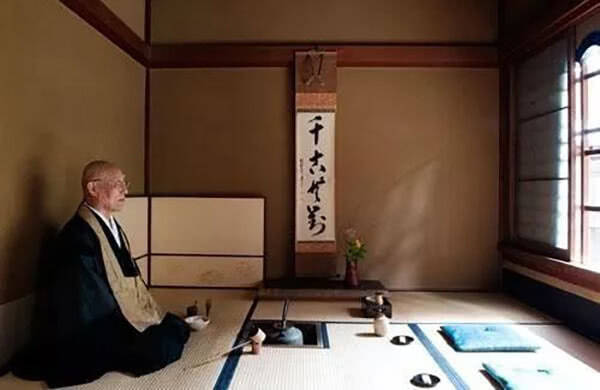
CONTENT
Roji – Outside The Japanese Tea House
Typically, Japanese tea houses are surrounded by a small garden called “Roji.”
The design of the Roji was so elaborate. Where the shrubs are planted, every stone’s shape, position, and arrangement must follow a definite rule.
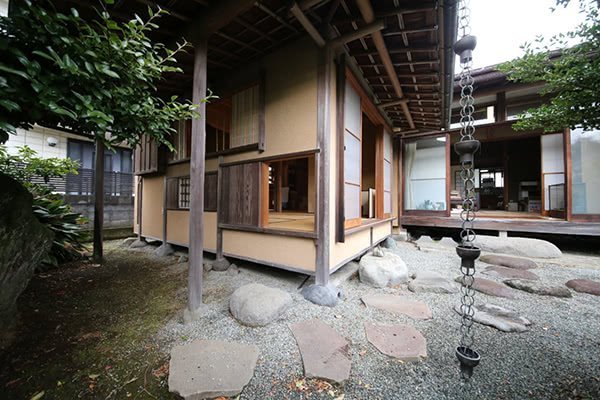
After your first step entered the Roji, means the contact with the outside world has been broken.
In the open ground, there is usually a handwashing pan called “Chōzubachi” for you to clean yourself before entering the tea house.
There is a pore at the bottom of the Chōzubachi. When the water drops to the ground, the pore would amplify the sound and drains the water. To hear it clearly, people also prepare a small bamboo tube beside the Chōzubachi, which can help enlarge the volume.

The Roof of The House
The roof of the Japanese tea house uses triangular design, build with leaf or bamboo piece.
Under the place far away from the roof(the center of the triangular) was the seat for the guest, and the nearest location from the roof was the host’s seat, which expressed the host’s humility and respect for the guests.
Nijiriguchi – A Special Entrance
The entrance to the tea house is very different from other Japanese buildings; it is called “Nijiriguchi.” And it is not like the standard Japanese sliding door which as high as the wall, but a small entrance (about 73 cm tall and 70 cm width) that can only be entered on kneeling.
This design comes from the sliding door of the boat cabin. Japan’s famous tea master Sen no Rikyū once go out on a boat, found the cabin sliding door is very small, people can only bend over to in and out, just similar the kneel-rite in the tea ceremony. So he utilized this design on the tea house.
Why must entre and out of the teahouse on kneeling? Because it’s an essential view of the Japanese tea ceremony. That means everyone’s status is equal, and everyone must keep humility when serving tea ceremony.
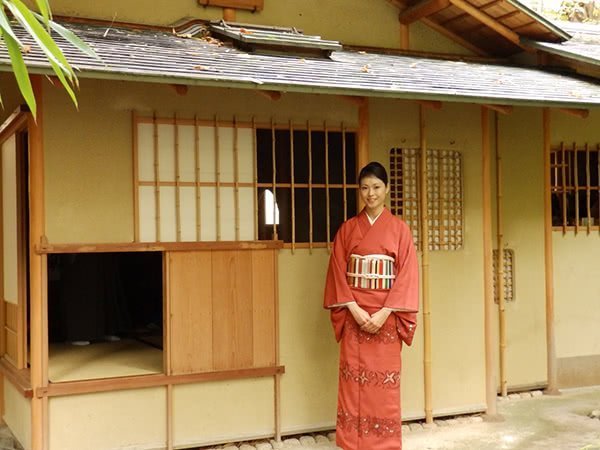
Tokonoma – Soul of The Tea House
The niche near the entrance called Tokonoma, which is the soul of the Japanese tea house. The host usually hangs some pictures or calligraphy on it. From the decorations, we can see the style of the tea room and the disposition of the host. Therefore, Tokonoma takes an essential place in the tea ceremony.
Tokonoma is a conventional design in traditional Japanese buildings. They are about 3m wide and 30 cm deep, with paintings, vases, or censer places inside. But the Tokonoma in the tea house greatly simplifies, width only 1.3m, height about 1.7 m, only hang an ink painting about zen.
Windows – Only For Lighting
The tea house interior beside Tokonoma, on the other 3 walls, all has small windows.
Japanese tea ceremony yearns for the natural light. Except in the evening or dawn case, an oil lamp is allowed to use, but never the electric ones. So typically there is no lighting-tool in the tea house, only the light through the windows provides lighting.
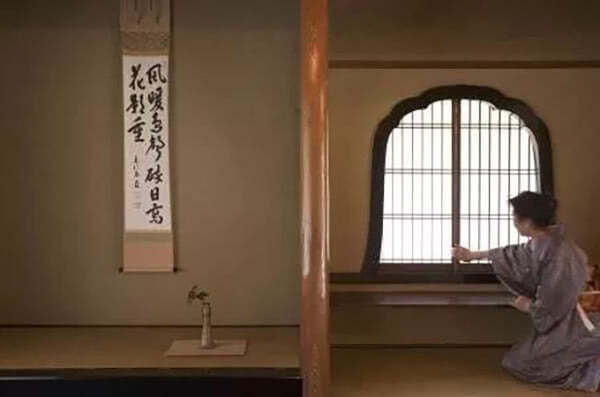
The space of the room is tiny. But lots of windows are set, typically 8. The shape and position of these windows are irregular and varied. So that the sense of space got to extend.
These windows are not for scenery viewing but only lighting. In the tea ceremony etiquette, both the host and guest should concentrate on it and abstain from looking elsewhere. The light through the windows will fall at the host sit, for more convenient operation. And at the side of the Tokonoma also set a window, the light will make the painting into a very charming contrast of light and dark.
Teawares – Simple and Original
The Japanese tea ceremony teawares were placed in the middle of the house, including iron case teapot, spoon, tea bowl, tea container, and so on. The design of the Japanese teawares are exceptionally delicate, and the using method is also particular, with very ornamental and collection value.
Besides, a floor hearth was set. At first, the farmers use it for warmth in winter, then it was taken into the tea house design for boiling water. The installation position of the floor hearth was a little deviation from the center of the room; it was not allowed to set it in the middle. That’s a kind of Japanese tea ceremony aesthetic point of view, which prefers dissymmetry.
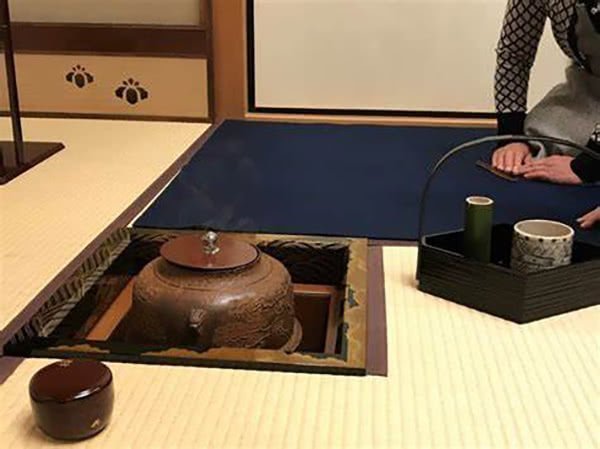
The Thought of Zen
The Japanese tea house acreage standard is four and a half pieces Tatami (about 8.186 square meters). There are nothings else except the necessary. “Silent” is an important view of Zen Buddhism.
All the things in the room, including the tea house itself, are made from the raw material from nature. Such as the stones, wooden, bamboo, grass for the garden building, and the clay, wooden teawares. All of them can provide a kind of infinite close to the nature experience, an excellent help for Zen meditation.
Thank you for such an informative article. It is so pleasant to learn more and more about Japanse culture.
you are welcome